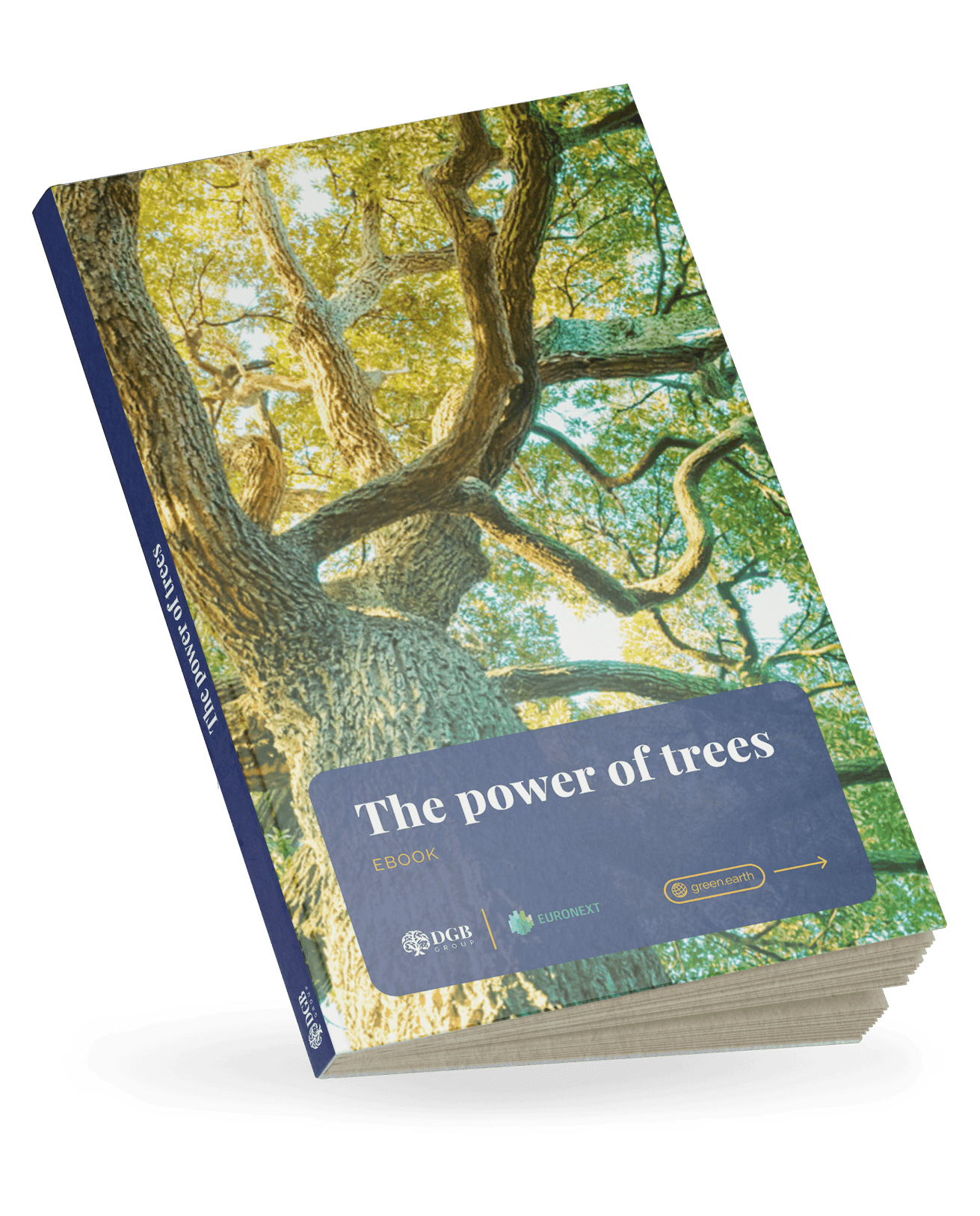The carbon market is entering a new phase, one defined not just by tonnes of CO₂ reduced but by the tangible, real-world benefits that come with high-integrity projects. Buyers are no longer solely satisfied with credits that neutralise emissions; they’re actively seeking carbon credit co-benefits that protect biodiversity, create jobs, and strengthen local ecosystems.
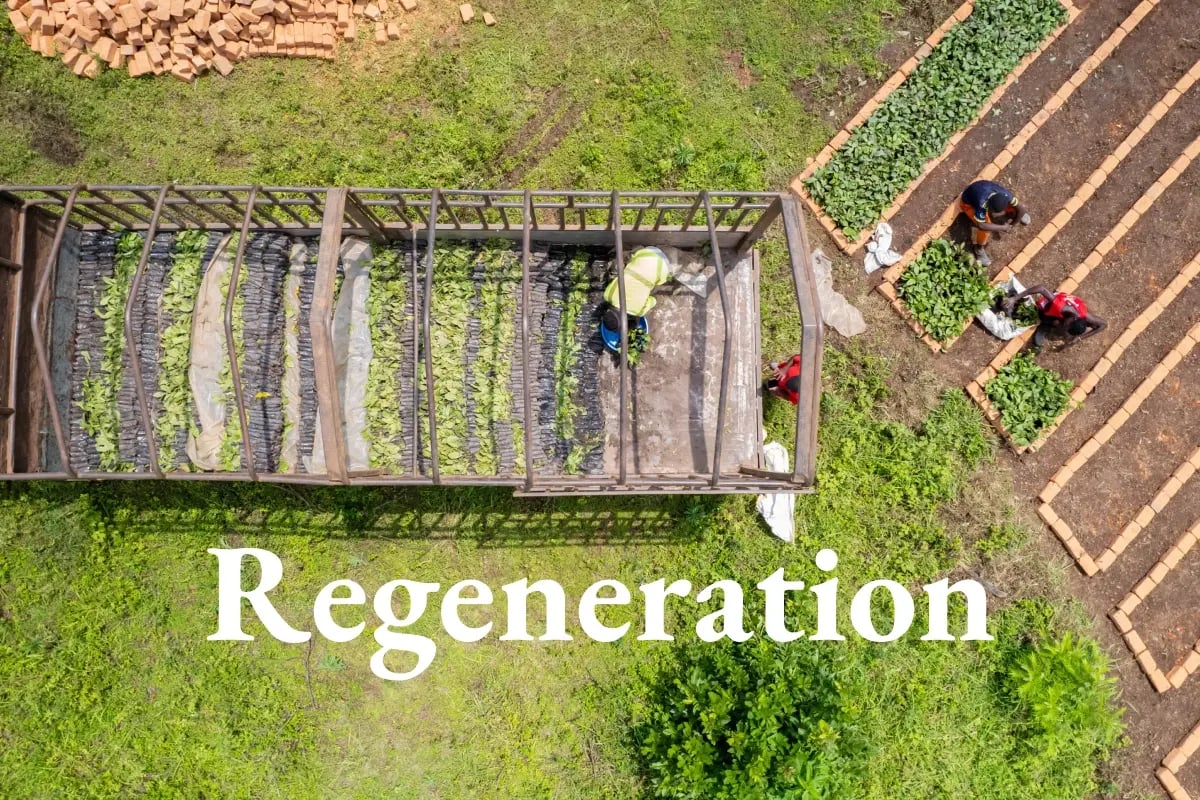 Drone photo of nursery workers during tree seedlings distribution. Bulindi Agroforestry and Chimpanzee Conservation Project, Green Earth.
Drone photo of nursery workers during tree seedlings distribution. Bulindi Agroforestry and Chimpanzee Conservation Project, Green Earth.
In fact, nearly 29% of corporate buyers now assess carbon units based on their biodiversity and community impacts, not just carbon output. This growing emphasis on biodiversity co-benefits signals a deeper cultural shift—one where carbon offsetting becomes part of a wider sustainability strategy that values regeneration over compensation.
The market is rewarding this shift. Data shows that projects aligned with the UN Sustainable Development Goals (SDGs) sell for around 86% higher prices than similar credits without SDG-linked benefits. Likewise, another analysis showed carbon units carrying at least one certified social or biodiversity impact command a 78% price premium compared to those without.
This trend extends even into compliance markets, where buyers are favouring high-quality carbon credits with social impact. Between 2021 and 2022, average carbon unit prices climbed 82% even as trading volumes fell—a clear signal that demand is consolidating around nature-positive carbon projects with transparent, verifiable co-benefits.
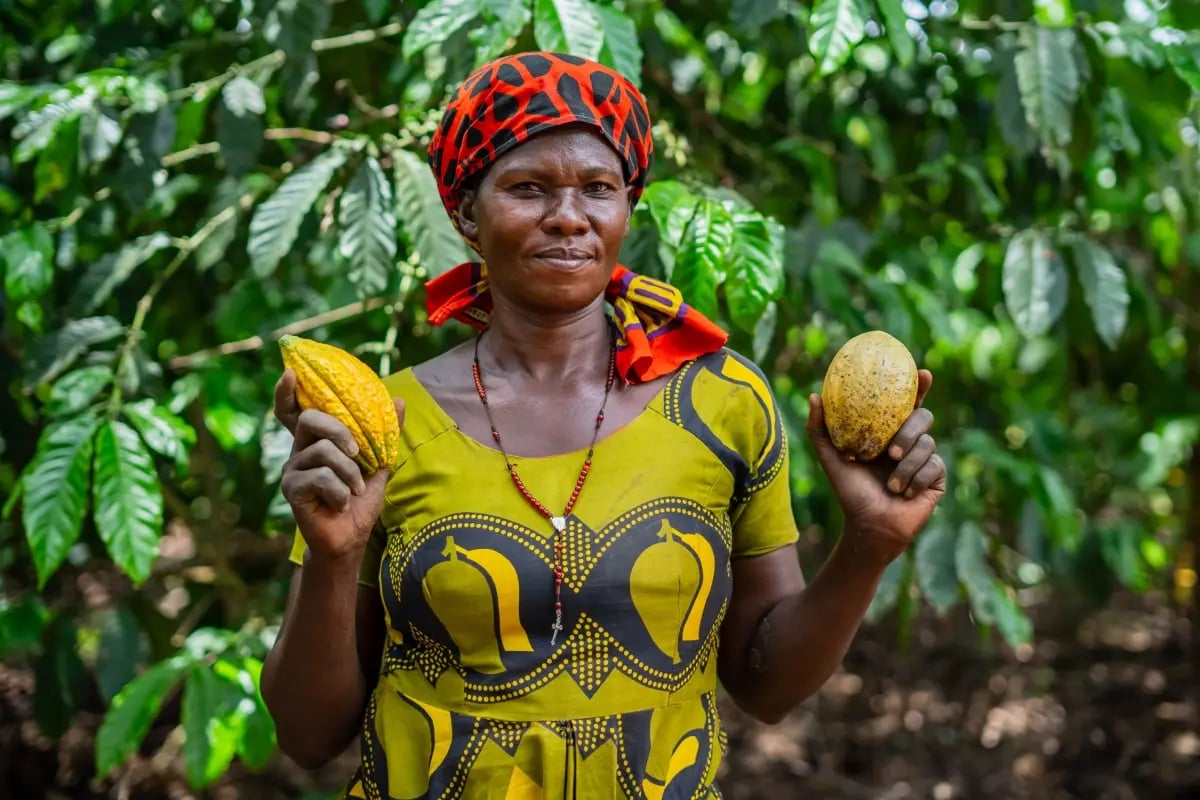 A woman from a local community is holding cacao fruits on her cocoa plantation. Bulindi Agroforestry and Chimpanzee Conservation Project, Green Earth.
A woman from a local community is holding cacao fruits on her cocoa plantation. Bulindi Agroforestry and Chimpanzee Conservation Project, Green Earth.
These carbon unit benefits go far beyond emissions accounting. Projects that empower local communities or restore biodiversity-rich landscapes are now seen as the gold standard in carbon procurement—investments that deliver measurable environmental impact, strengthen ESG commitments, and create lasting value.
This article lays out how carbon credits with biodiversity co-benefits are influencing purchasing decisions—and why these non-carbon benefits of carbon credits (such as species protection, local jobs, and water retention) increasingly shape value and trust. We’ll begin by exploring what co-benefits mean in practice and how biodiversity and social outcomes are quantified in today’s market. Then we’ll examine the ecological and financial advantages of biodiversity integration—how species protection in carbon projects strengthens carbon permanence and project resilience.
Next, we’ll look at the role of local community impact as a key differentiator in credit quality, followed by a closer look at how buyers can assess biodiversity co-benefits and evaluate verified high-quality carbon credits with social impact. Finally, we’ll touch on the emergence of biodiversity credits as a complementary mechanism to carbon finance, reflecting the market’s move toward truly nature-positive carbon projects that deliver benefits beyond tonnes.
The power of biodiversity co-benefits in carbon markets
When we talk about biodiversity co-benefits, we refer to the measurable ecological advantages that accompany well-designed carbon projects—benefits that extend beyond carbon storage to support the health of ecosystems and the stability of local environments. In voluntary carbon markets, these co-benefits have become one of the most important quality indicators for project buyers. They can include a wide range of attributes from species protection in carbon projects and reforestation that restores native habitats, to pollinator corridor creation, soil regeneration, or watershed resilience.
Put simply, biodiversity co-benefits strengthen both the ecosystem and the carbon project itself. Research shows that diverse systems capture and store significantly more carbon in subtropical forests, each additional tree species increases total carbon stock by around 6.4%. On the other hand, biodiversity loss undermines carbon permanence—global modelling studies estimate that continued species decline driven by land-use change and environmental pressure could release between 7 and 146 petagrams of carbon (billions of tonnes of CO₂) from terrestrial ecosystems over the coming decades. These findings underline a simple truth: healthy, biodiverse ecosystems are the most reliable carbon sinks.
Read more: How biodiversity loss impacts ecosystems and what we can do to help
Biodiversity doesn’t just boost carbon sequestration—it also enhances ecosystem resilience. According to research published in Nature, higher species diversity increases an ecosystem’s resistance to droughts, floods, and other environmental stressors, while biodiversity loss has the opposite effect. This resilience makes a project’s carbon value more durable and its long-term social and environmental outcomes more stable.
Unsurprisingly, the market has started to reflect these realities. Nature-based projects—reforestation, habitat restoration, and agroforestry, to name a few—that inherently deliver biodiversity gains now account for 46% of the voluntary market’s total value, and their average credit prices rose by roughly 75% in a single year. Buyers are explicitly prioritising high-quality carbon credits with social impact and biodiversity outcomes, often paying a 78% price premium for verified co-benefits compared to conventional credits.
For many investors and corporates, these non-carbon benefits of carbon credits are not simply ethical add-ons—they’re a marker of credibility, longevity, and positive brand association. The next frontier, however, goes even further. While carbon projects with biodiversity co-benefits remain the cornerstone of integrity in voluntary markets, biodiversity credits are emerging as a complementary mechanism that directly values and finances ecological restoration itself. Together, they point to a future where climate and nature investments work in tandem, creating nature-positive carbon projects that deliver real, measurable returns for both the planet and people.
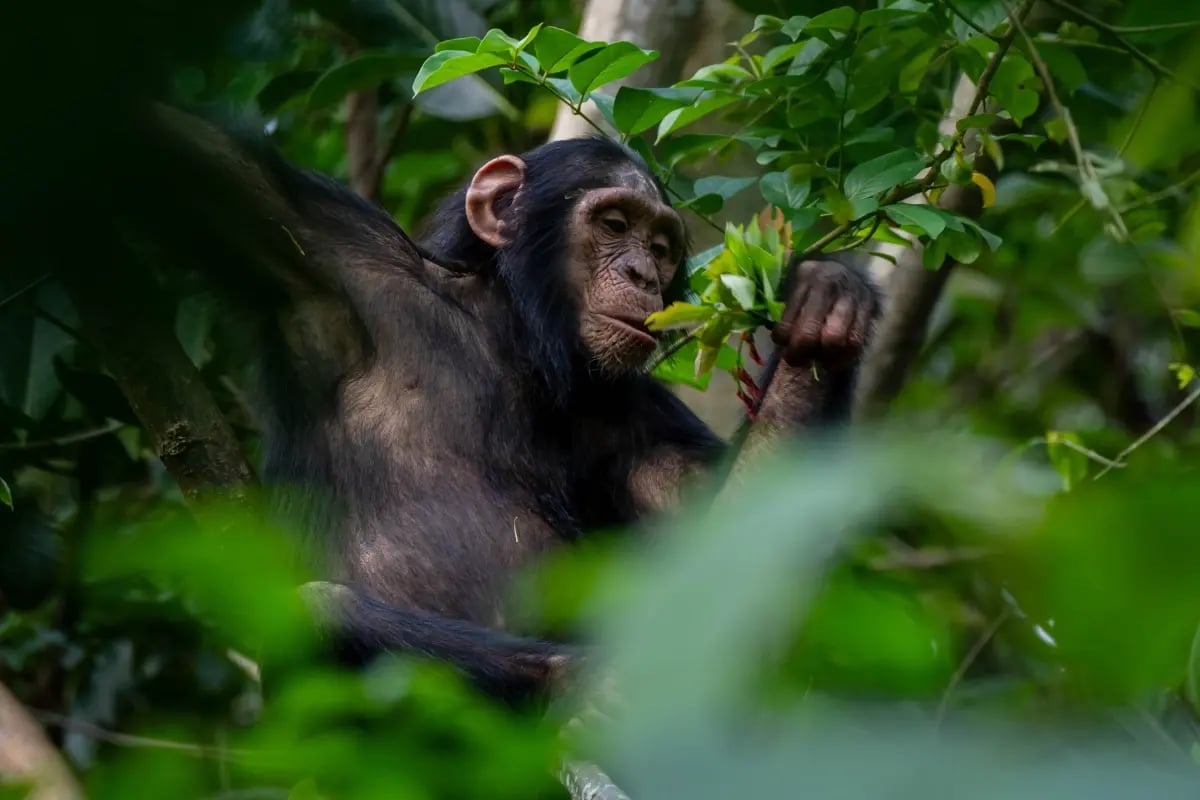 Bulindi chimpanzee in its natural habitat. Bulindi Agroforestry and Chimpanzee Conservation Project, Green Earth.
Bulindi chimpanzee in its natural habitat. Bulindi Agroforestry and Chimpanzee Conservation Project, Green Earth.
Species protection and the power of nature-positive carbon projects
Protecting endangered species is one of the most effective ways to safeguard the long-term stability of carbon projects. Species protection in carbon projects ensures that restored or newly planted ecosystems remain ecologically functional and resilient. When diverse wildlife thrives, it contributes to healthier soils, natural seed dispersal, pest regulation, and pollination, all of which strengthen a project’s capacity to sequester carbon and withstand environmental shocks. In short, thriving species make for thriving carbon sinks.
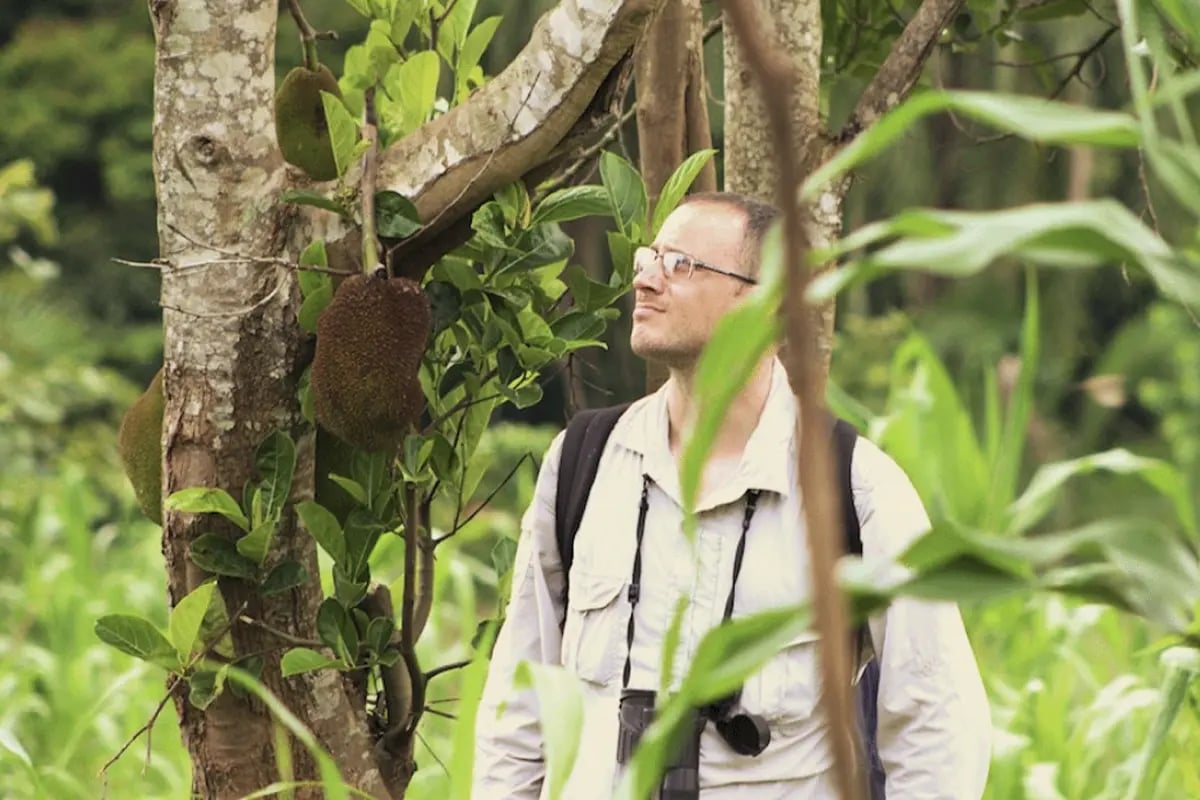 Dr. Matt McLennan conducting forest research.
Dr. Matt McLennan conducting forest research.
Nowhere is this connection clearer than in the Green.Earth Bulindi Agroforestry and Chimpanzee Conservation Project in western Uganda. This nature-positive carbon project combines afforestation and reforestation with tangible community development, protecting the remaining habitat of over 300 wild chimpanzees in the Hoima and Masindi districts. The project is implemented in collaboration with the Bulindi Chimpanzee & Community Project, led by Dr Matt McLennan, and works directly with local households to ensure conservation delivers shared value.
Read more: Planting the future: Building a nursery for Bulindi’s forests
Through forest enrichment planting, the project restores native tree species that provide natural foods for chimpanzees, reducing human–wildlife conflict and expanding forest cover. This approach not only protects biodiversity but also enhances carbon sequestration by maintaining healthy, species-rich habitats. The project’s efforts have already been recognised globally, even featuring in Planet Earth III, narrated by Sir David Attenborough, as a model of coexistence between people and wildlife.
Beyond the forest, Bulindi’s impact reaches deep into the surrounding villages. The project supports local households with educational programmes and small-scale farming initiatives that reduce reliance on natural forests. It also constructs village boreholes, giving communities reliable access to clean water—a crucial non-carbon benefit of carbon credits that improves daily life and reduces pressure on ecosystems. In doing so, the project exemplifies how high-quality carbon credits with social impact can create a ripple effect of environmental and human well-being.
Read more: From the ground up to space: seeing Green Earth’s impact in Uganda
What makes Bulindi particularly innovative is its agroforestry model. Unlike standard reforestation projects, which focus primarily on replanting trees to restore ecosystems, agroforestry projects integrate trees into existing agricultural landscapes. This creates a living mosaic where forests and farms coexist, supporting biodiversity while sustaining livelihoods. Farmers can grow crops like coffee or fruit beneath tree cover, improving soil fertility and water retention, while trees store carbon and provide shade and timber resources. It’s a holistic system, one that strengthens environmental resilience, supports rural economies, and conserves habitats for species like the endangered chimpanzees of Bulindi.

By combining carbon sequestration, species protection, and local community impact, projects like Bulindi redefine what it means to generate environmental value. They prove that the most effective carbon initiatives are those that deliver measurable co-benefits—restoring nature, empowering people, and generating carbon credit co-benefits that resonate with investors seeking both ecological and reputational returns.
Local community impact and biodiversity as differentiators
What separates a good carbon project from a great one often lies beyond the forest canopy. The combined local community impact and biodiversity outcomes of a project are increasingly viewed as defining traits of high-quality carbon credits with social impact. Buyers are learning that the most credible projects are those that improve ecosystems and uplift communities, reinforcing each other’s success.
Across the world, community jobs in carbon offset projects have become a cornerstone of this integrated approach. The sustainable forest and land-use sector, where many carbon projects are rooted, already employs about 33 million people globally. Well-designed carbon projects enhance these numbers by generating stable income through tree planting, ecosystem monitoring, sustainable agriculture, and nature-based carbon projects such as ecotourism or biodiversity restoration.
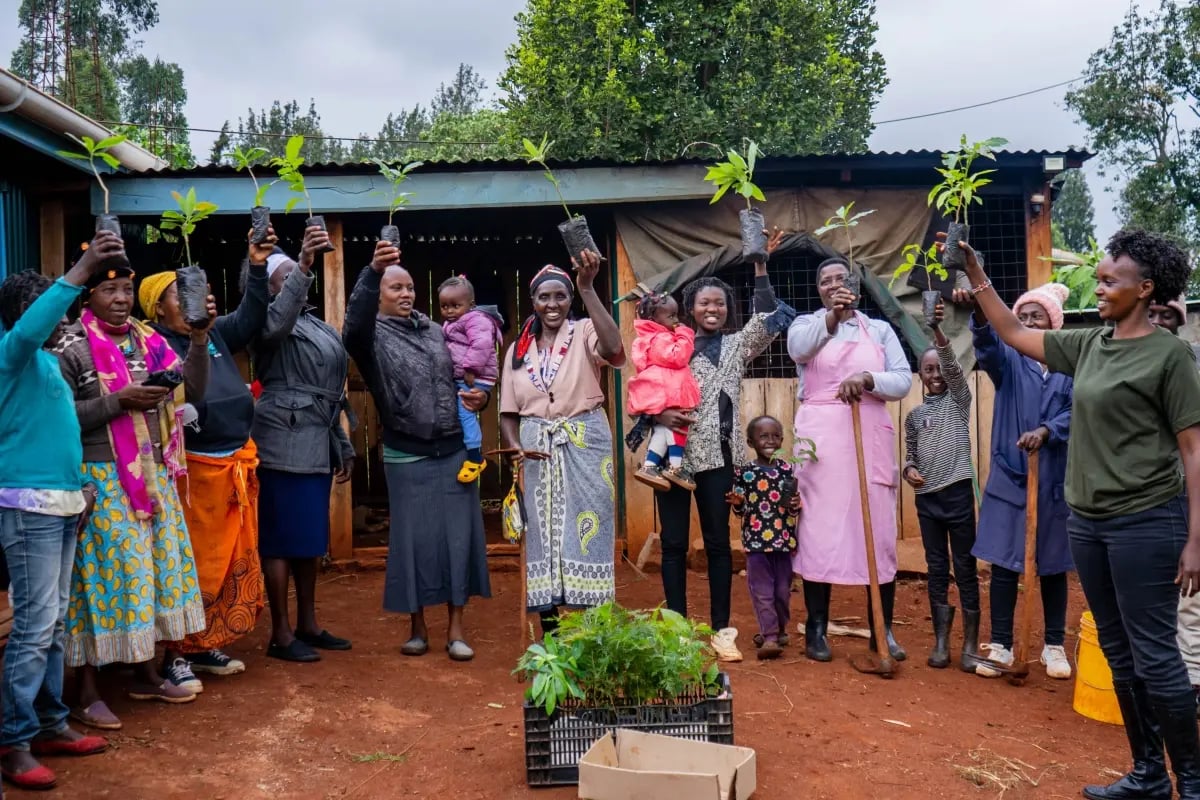 Local women and Green Earth team members during tree seedlings distribution. Hongera Reforestation Project, Green Earth.
Local women and Green Earth team members during tree seedlings distribution. Hongera Reforestation Project, Green Earth.
Beyond employment, these initiatives strengthen communities from the inside out. Many non-carbon benefits of carbon credits take the form of tangible improvements to daily life—schools, healthcare facilities, boreholes for clean water, and sustainable energy infrastructure funded through project revenues. This reinvestment builds resilience at the local level, helping households diversify their income and depend less on unsustainable land practices. Similar initiatives, such as Brazil’s major restoration drive for Indigenous Amazon lands, demonstrate how community-led restoration and biodiversity recovery can advance both social and ecological resilience.
When communities see visible benefits from conservation, they become its strongest advocates. Projects that share profits, respect land rights, and involve local people in decision-making cultivate long-term stewardship—a crucial factor in maintaining both ecological health and carbon permanence. In this way, local community impact and biodiversity act as twin pillars of integrity, ensuring that emissions reductions are not only achieved but sustained across generations.
Read more: The social impact of Green Earth’s projects
Leading standards reflect this evolution in market values. The Gold Standard, one of the world’s most rigorous certification frameworks, requires its projects to improve lives as well as reduce emissions. Its global portfolio is projected to benefit 100 million people and generate $100 billion in shared value by 2030, all while delivering environmental outcomes. This reinforces a broader shift towards regenerative carbon finance, a model where every tonne of CO₂ sequestered is tied to measurable gains in human well-being, environmental health, and community resilience.
In essence, these non-carbon benefits of carbon credits elevate a project from being merely sustainable to truly regenerative. They reduce poverty, create ownership, and establish local systems that protect biodiversity long after project funding cycles end. As more buyers recognise this synergy, community empowerment and biodiversity protection are becoming the benchmarks for trust, integrity, and long-term carbon value.
Measuring and assessing biodiversity co-benefits
In today’s carbon market, credibility is currency. Buyers want proof that the biodiversity co-benefits and social outcomes tied to a carbon project are measurable, traceable, and independently verified. Transparent reporting is what distinguishes high-quality carbon credits with social impact from generic offsets.
The importance of credible measurement
Assessing biodiversity co-benefits during project selection or procurement ensures that the chosen units represent tangible ecological and community outcomes, not just theoretical potential. A credible assessment framework allows investors to compare projects using common indicators, whether that’s the number of species protected, the hectares of restored habitat, or the jobs created in carbon offset projects. These biodiversity indicators in a carbon credit project provide the same kind of accountability that carbon accounting does for emissions.
Read more: What business leaders need to know before buying carbon offsets
At Green Earth, we integrate this precision into our work by developing and verifying our units and measurable ecological outcomes across projects. Our monitoring frameworks combine field data (like species count, ecosystem diversity scores, and habitat connectivity mapping) with community metrics such as education access or income improvements. This holistic approach ensures that every tonne of carbon captured tells a broader story of ecosystem recovery and social progress.
 CO2 expert tool.
CO2 expert tool.
Frameworks that verify impact
Over the last decade, international standards have evolved to measure these non-carbon benefits of carbon credits with the same rigour as carbon itself.
- Verra CCB Standards & SD VISta: Verra’s Climate, Community & Biodiversity (CCB) Standards, established in 2005, provide one of the earliest frameworks for verifying community and biodiversity outcomes. In 2019, Verra expanded this with the Sustainable Development Verified Impact Standard (SD VISta), which allows projects to define and report metrics such as hectares of habitat restored, jobs for women, or households gaining clean water access, followed by independent auditing.
- Gold Standard for the Global Goals: Since 2017, the Gold Standard has required projects to quantify and verify sustainable development outcomes—from water access to gender equality—alongside emission reductions. Its SDG Impact Tools give developers a ready-made library of indicators and methodologies to measure progress, such as reduction in respiratory illness through cleaner cooking or number of households powered by renewables. This integrated model has made Gold Standard a global benchmark for nature-positive carbon projects with verified human impact.
- Complementary Co-Benefit Standards: Several other frameworks now specialise in social and biodiversity outcomes. SocialCarbon and Plan Vivo require continuous tracking of income levels, land rights, biodiversity surveys, and soil quality in land-based projects. The W+ Standard quantifies benefits for women, including time saved and income earned, and allows these to be tagged onto carbon units. Similarly, the Fairtrade Climate Standard ensures fair revenue sharing with participating communities.
Read more: Who’s who in the carbon market: Key institutions and frameworks and what they do
Together, these standards have ushered in a new era of transparency. A notable innovation is RMI’s Carbon Credit Data Framework (CCDF), which standardises reporting across projects: Of its 570 data fields, 368 are dedicated to socio-environmental aspects like indigenous rights, water quality, and education outcomes. Such detailed MRV (Measurement, Reporting, and Verification) systems are rapidly improving confidence in reported co-benefits and enabling buyers to make evidence-based choices.
Tools for practical evaluation
For companies seeking to act now, technology is making assessment accessible. Tools like Green Earth’s CO₂ Expert tool give organisations a practical entry point to evaluate their carbon footprint, model reduction pathways, and compensate for their impact through projects with carbon credit co-benefits. By integrating biodiversity and social impact data early in their sustainability planning, companies can align procurement strategies with verified environmental outcomes, ensuring every cent spent advances both environmental and community goals.
Ultimately, rigorous measurement transforms goodwill into accountability. From global standards like SD VISta and Gold Standard to in-house platforms like the CO₂ Expert Tool, the path forward is clear: Transparent data, credible indicators, and verifiable biodiversity co-benefits are now the benchmarks of trust in the carbon market.
Why buyers pay more for carbon credits with biodiversity and social co-benefits
Buyers in the carbon market today aren’t chasing the cheapest offsets, they’re seeking high-quality carbon credits with social impact that deliver measurable value for people and ecosystems. In this evolving landscape, verified biodiversity data and transparent community outcomes have become the new currency of trust, setting apart projects that simply reduce emissions from those that restore the world around them.
Read more: Balancing portfolios: Nature-based vs renewable carbon credits
As many analyses have shown, corporations and investors are increasingly drawn to, and willing to pay more for, units that are dual-certified for emissions reductions and co-benefits. Verified biodiversity outcomes and social data enhance brand credibility, strengthen ESG reporting, and reduce exposure to accusations of greenwashing. In a competitive market, this transparency translates into tangible economic value.
At Green Earth, our projects embody this premium standard of transparency and integrity. Every initiative we develop is built to deliver both measurable carbon results and clear, verifiable benefits for nature and communities. Through rigorous monitoring, third-party validation, and data-backed reporting, we ensure that our units don’t just represent a tonne of carbon removed, they represent restored habitats, empowered communities, and measurable, lasting impact.
Read more: Benchmarking emissions: What’s a good carbon footprint for my industry?
As the market continues to evolve, one truth is clear: Carbon credit co-benefits are the benchmark of quality. Buyers willing to invest in verified ecological and social value are contributing to a regenerative model of green finance that rewards integrity, transparency, and the restoration of life itself. They also benefit their business with improved sustainability reporting and credentials, attracting eco-conscious customers and investors.
Choosing nature-positive, high-integrity carbon projects
The future of the carbon market belongs to projects that go beyond compensation, to regeneration. As investors and corporates increasingly look for proof of lasting environmental and social value, nature-positive carbon projects have emerged as the true benchmark of quality. These initiatives do more than neutralise emissions: they restore biodiversity, empower communities, and build resilience where it’s needed most.
For buyers, the path forward is clear. When evaluating offset options, seek verified data on biodiversity indicators in a carbon credit project, from the number of species protected to the hectares of habitat restored and the local livelihoods supported. Look for certifications such as Verra’s CCB, Gold Standard, or SD VISta, which ensure that co-benefits are measured and audited with transparency. And, most importantly, partner with developers who treat co-benefits as a core part of their mission.
Read more: The power of Green Earth’s high-quality carbon projects in Kenya
That’s where Green Earth stands apart. As an end-to-end developer, we have full oversight of the carbon unit lifecycle, ensuring integrity and quality. Our projects are built on the belief that credible climate action must serve both people and nature. We understand that today’s investors expect transparency and long-term value. That’s why we combine field-level data with advanced assessment tools like the CO₂ Expert tool, enabling companies to not only calculate their carbon footprint but also showcase their commitment to broader social and ecological impact. Whether it’s restoring forests, improving livelihoods, or safeguarding biodiversity hotspots, our projects embody a regenerative approach to sustainability, one that proves carbon finance can drive real transformation.
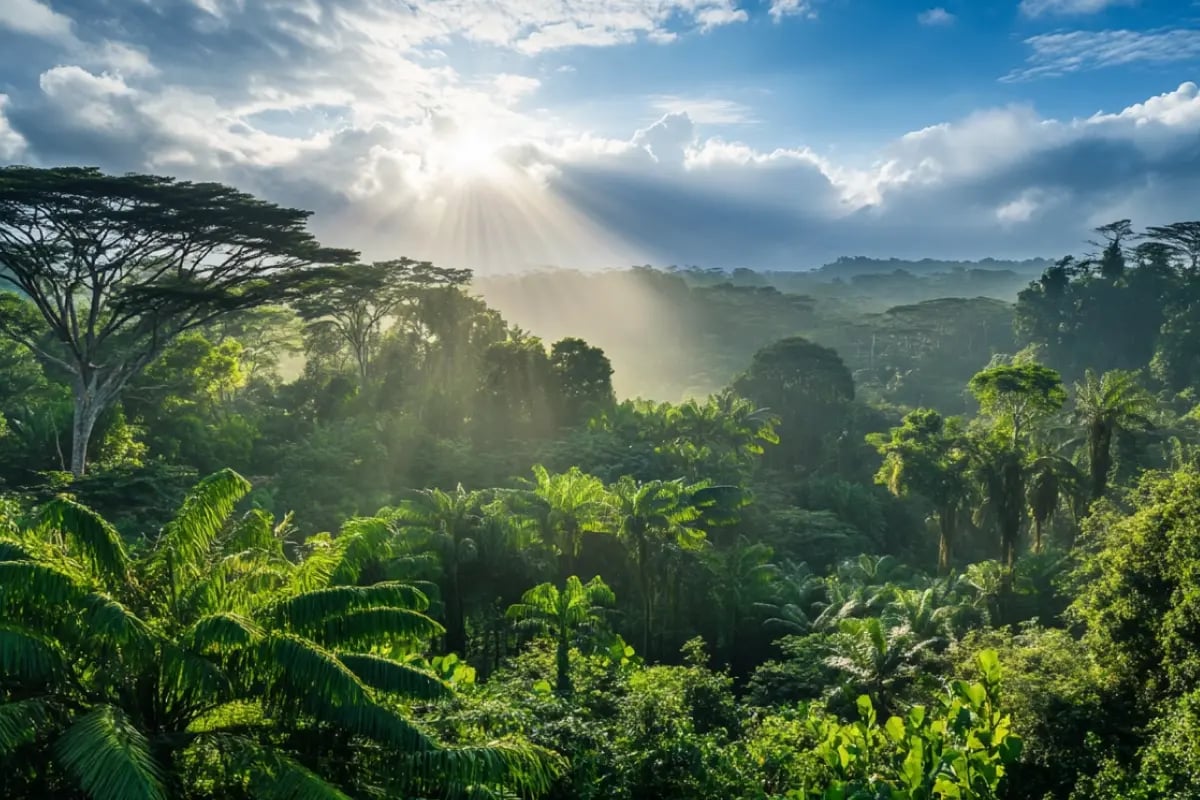 Landscape view of lush, biodiverse African forest. AI generated picture.
Landscape view of lush, biodiverse African forest. AI generated picture.
As markets evolve towards integrity and accountability, Green Earth offers a way forward for your business to be a true environmental steward: investing in nature-positive projects that go beyond tonnes, creating measurable change for the planet and the people.
Discover how your organisation can act and benefit today—with transparency, credibility, and long-lasting impact.









 CO2 expert tool.
CO2 expert tool. 


